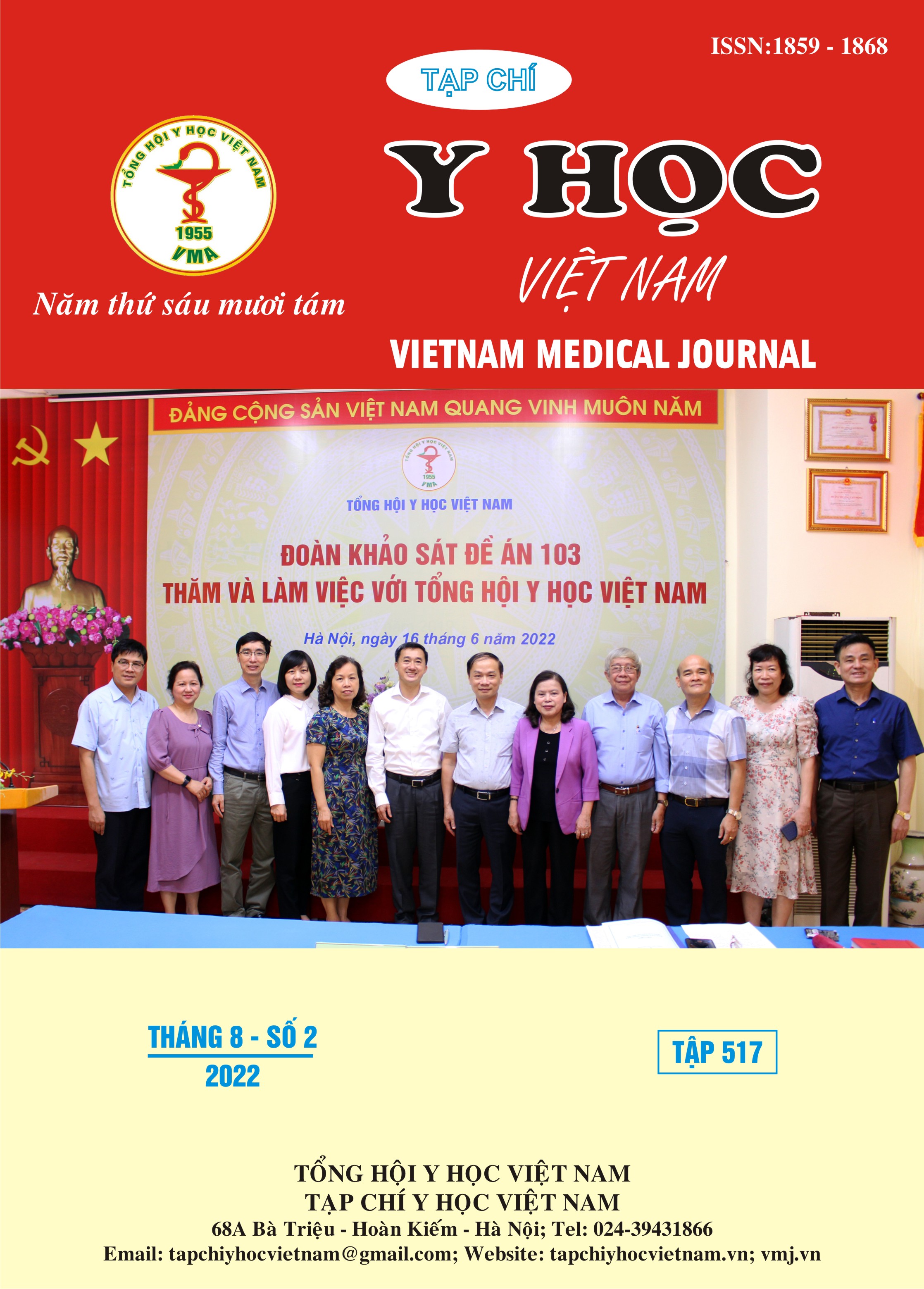ENDOSCOPIC ENDONASAL SURGERY FOR SUPRASELLAR MENINGIOMAS AT UNIVERSITY MEDICAL CENTER 2022
Main Article Content
Abstract
Objective of the study. Following the benefits of the neurosurgical microscope, the outcomes in suprasellar meningioma surgery were significantly improved. More recently, endoscopic neurosurgery has been widely applied to remove these lesions with many outstanding advantages. The purpose of this study is to evaluate the results of transnasal endoscopic treatment for suprasellar meningiomas at our center. Subjects and research methods. Between 2017 and 2022, there were 22 patients with suprasellar meningiomas, who met the selection criteria and underwent transnasal endoscopic surgery to remove the tumor at Medical University Center in Ho Chi Minh City. Meningiomas include tuberculum sellae, planum sphenoidale region depending on the location of the tumor attachment. Follow-up after surgery by clinical examination, images post-op (MRI) at the time of hospital discharge, three months after surgery and doubling the time thereafter. Results. Among 22 patients with the suprasellar meningiomas, the patient's age varied from 30 to 74, mean: 56 and there was a clear predominance of female over male (76% female). Headache and vision loss are these most common symptoms accounting for 73% and 68% respectively. The most common tumor sites were the tuberculum sellae (64%). Complete tumor removal (Simpson I) 20 patients (91%). Tumors with vascular encasement and large size are the two main factors that make it difficult to remove the tumor completely (p < 0.05). Tumor location or tumor extension into the optic canal is not a predisposing factor to resection. Improved visual acuity 80%, one case worsen after surgery (4.5%). Complications of CSF leak 13.6% with one case requiring re-operation. Anosmia 9.1%, meningitis 13.6%, transient diabetes insipidus 9.1%, post-operative sinusitis 18%. Conclusions. Endoscopic endonasal surgery for suprasellar meningiomas with several major advantages of the endonasal route such as providing optimal tumor access window, less structural damage, devascularization is accomplished early in surgery by interrupting the dural blood supply during the approach and decompress the optic nerve from the beginning of the operation. Futhermore, this approach offers no brain retraction, no scars and shorter recovery time. Careful patient selection and experienced neurosurgeons will help us achieve maximum treatment results with minimal complications.
Article Details
Keywords
endoscopic endonasal surgery, suprasellar meningiomas, planum sphenoidale, tuberculum sellea
References
2. Serge Makarenko, MD, Erick M. Carreras, BSc, and Ryojo Akagami, MD, MHSc, FRCSC: Craniotomy for perisellar meningiomas: comparison of simple (appropriate for endoscopic approach) versus complex anatomy and surgical outcomes. J Neurosurg Volume 126 • April 2017
3. B Garni Barkhoudarian1,2, Daniel F. Kelly1,2: Endoscopic endonasal surgery for anterior skull base meningiomas. Avery et al. Mini-invasive Surg 2021;5:17
4. Charles Kulwin, M.D.,1 Theodore H. Schwartz, M.D.,2 and Aaron A. Cohen-Gadol, M.D., M.Sc.1: Endoscopic extended transsphenoidal resection of tuberculum sellae meningiomas: nuances of neurosurgical technique. Neurosurg Focus / Volume 35 / December 2013
5. Cappabianca P, Cavallo LM, Esposito F, Solari D: Sellar/tuberculum approach, in Kassam AB, Gardner PA (eds): Endoscopic Approaches to the Skull Base. Progress in Neurological Surgery, Vol 26. Basel: Karger, 2012, pp 41–59
6. Christian A. Bowers, M.D., Tamer Altay, M.D., and William T. Couldwell, M.D., Ph.D: Surgical decision-making strategies in tuberculum sellae meningioma resection. Neurosurg Focus / Volume 30 / May 2011
7. Hadad G, Bassagasteguy L, Carrau RL, Mataza JC, Kassam A, Snyderman CH, et al: A novel reconstructive technique after endoscopic expanded endonasal approaches: vascular pedicle nasoseptal flap. Laryngoscope 116:1882–1886, 2006
8. Mahmoud M, Nader R, Al-Mefty O: Optic canal involvement in tuberculum sellae meningiomas: influence on approach, recurrence, and visual recovery. Neurosurgery 67 (3 Suppl Operative): ons108–ons119, 2010
9. Symon L, Rosenstein J: Surgical management of suprasellar meningioma. Part 1: The influence of tumor size, duration of symptoms, and microsurgery on surgical outcome in 101 consecutive cases. J Neurosurg 61:633–641, 1984


